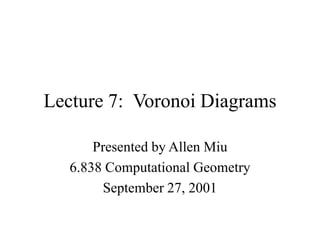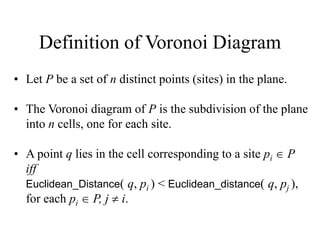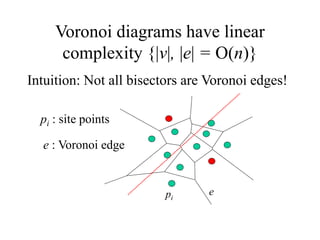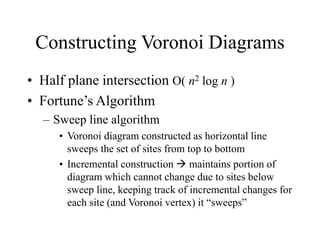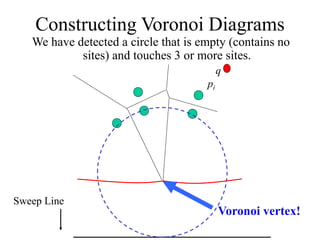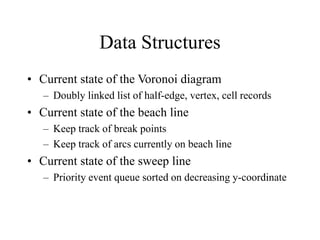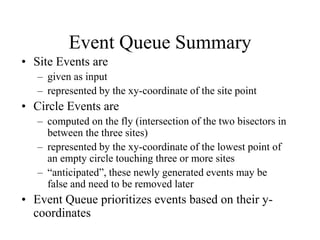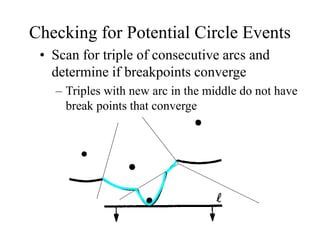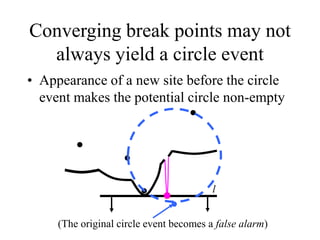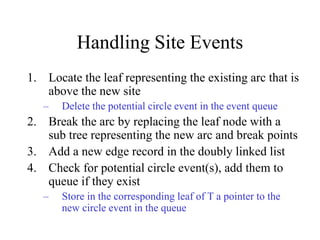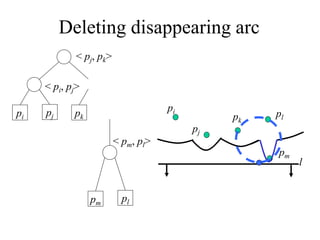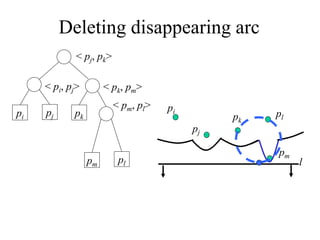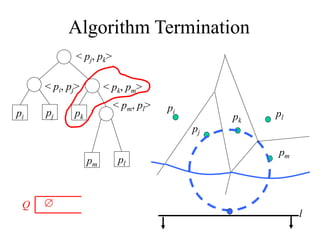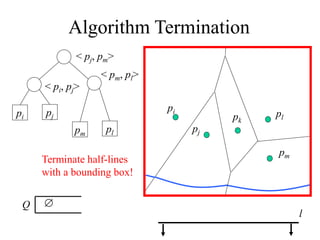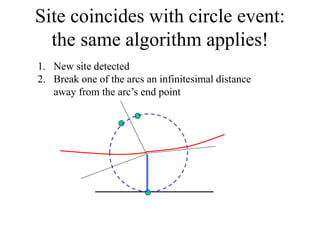This document provides an overview of Voronoi diagrams, including:
- Defining Voronoi diagrams as subdividing a plane into regions based on distance to input sites
- Demonstrating Voronoi diagrams for 1, 2, and more sites
- Explaining properties like cells, edges, and vertices
- Analyzing the complexity and proving Voronoi diagrams have linear size
- Outlining Fortune's sweep line algorithm for constructing Voronoi diagrams in linear time using data structures like a balanced binary search tree and doubly linked list
